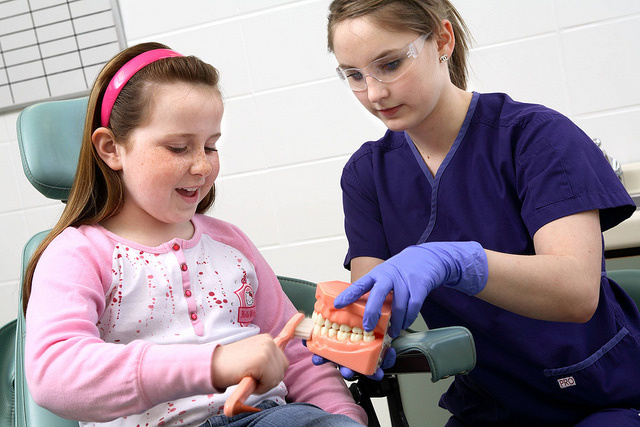
One of the worst parts of going to the dentist is when they stick the trays with flavored goop in your mouth and make you sit there for the better part of five minutes. Most of us remember a time as children when we had to sit through this torture. That “goop” is called fluoride, and most people don’t know too much about it. For example, do we really need these treatments.
Fluoride is a mineral that can be found in water, rocks, plants, and soil, and in your teeth. Fluoride helps prevent cavities by strengthening your enamel, or the hard substance on the outside of your teeth.
Fluoride can actually reverse early stages of tooth decay. Not many things can undo the damage to your teeth, but fluoride can. This mineral also prevents the growth of harmful bacteria that is caused by the breaking down of carbs and sugar.
How do I get fluoride?
Children receive fluoride treatments at the dentist, but this practice is discounted around age 14. However, you still need fluoride, so look for toothpaste and mouthwashes that contain it. We also consume fluoride through food and water. If your dentist recommends extra fluoride, he or she might prescribe drops or gels to add to your food and drink, which works well for kids.
Depending on the state of your oral health, your dentist might recommend full fluoride treatments — even after age 40 and older. People with lots of crowns or areas of tooth erosion often benefit greatly from fluoride treatments, which make the teeth more resistant to decay, and less sensitive to hot and cold.
Past age 50, people are more susceptible to root decay, and fluoride can help there, too. Your dentist might suggest a prescription-level fluoride toothpaste or offer you fluoride trays to use at home. (Note: swallowing large amounts of fluoride is not good for you, so make sure to spit it out afterward when using trays.) Fluoride treatments work best after a cleaning, so your dentist might even recommend a treatment while at the office, which is called a dental varnish, just like the ones given to kids. We know it’s not fun, but these treatments can save you a lot of pain, money, and time later!
It’s important to note that none of this can take the place of brushing and flossing regularly. Any fluoride treatments should occur in addition to brushing and flossing.
Fun Fluoride Facts
Fluoride is a critical part of oral health and can make a huge difference in your smile. If you have any questions or need toothpaste r